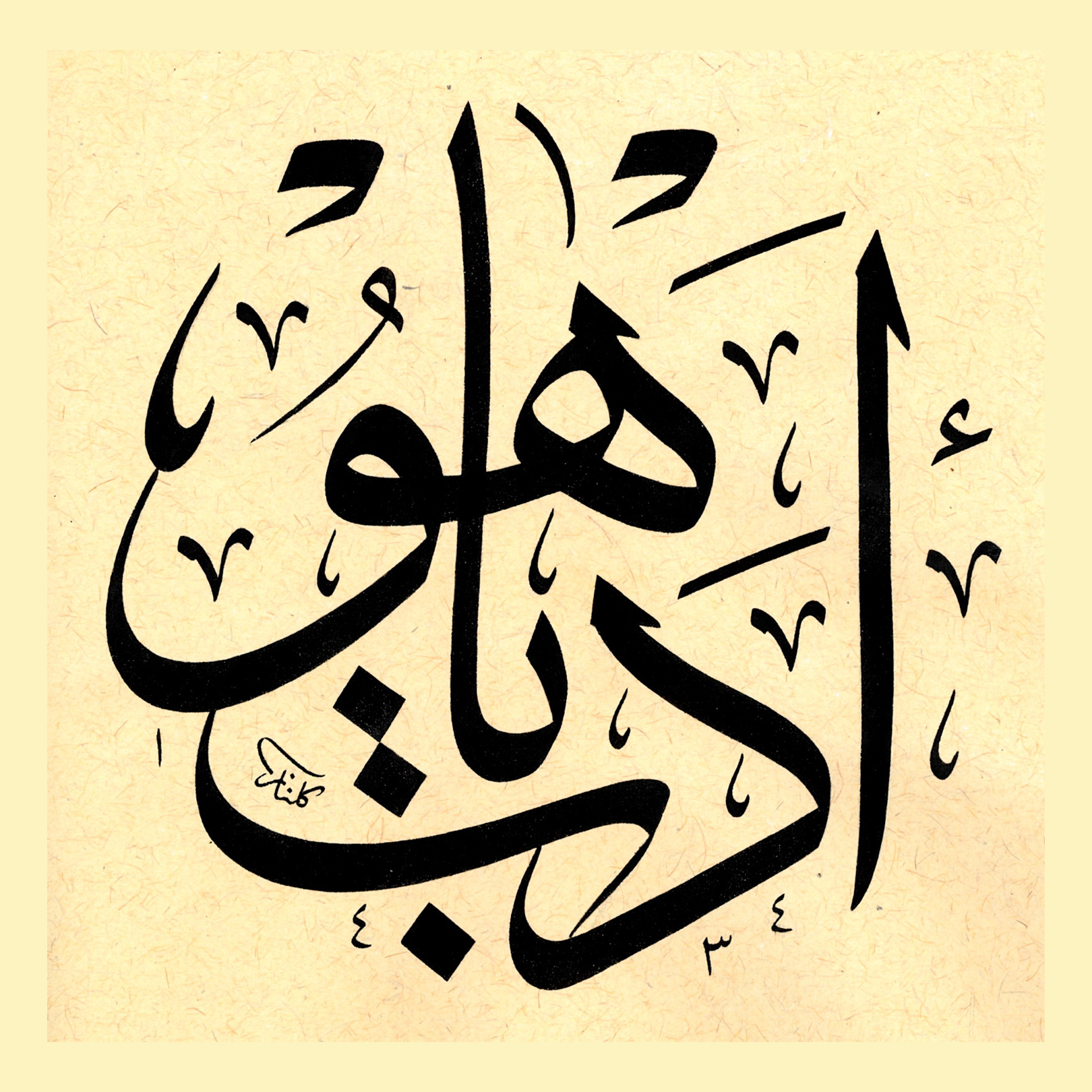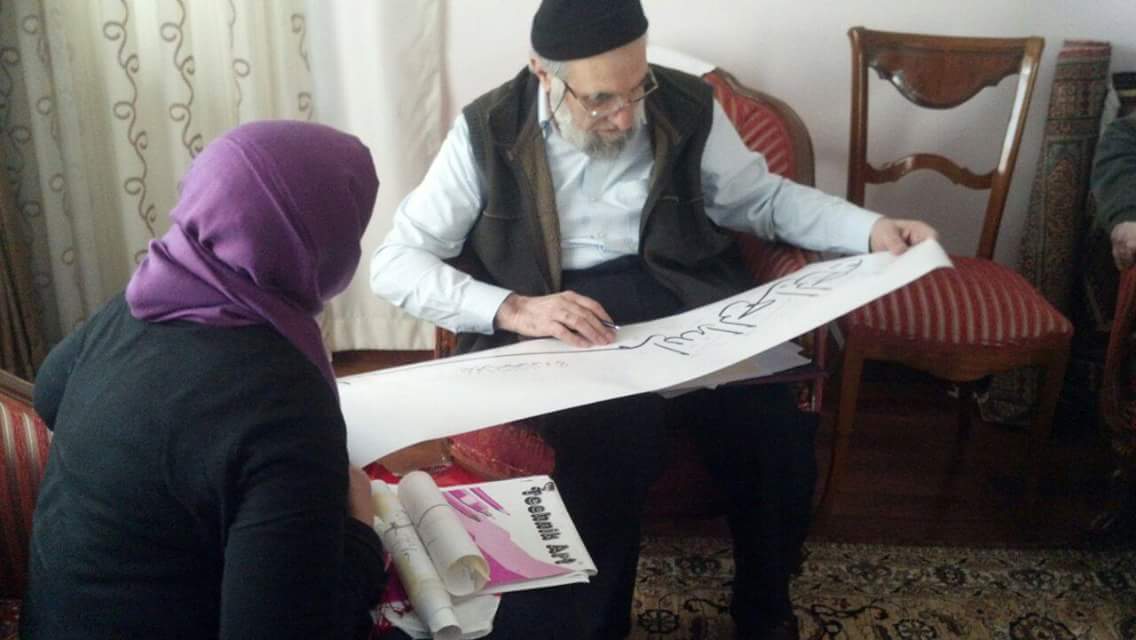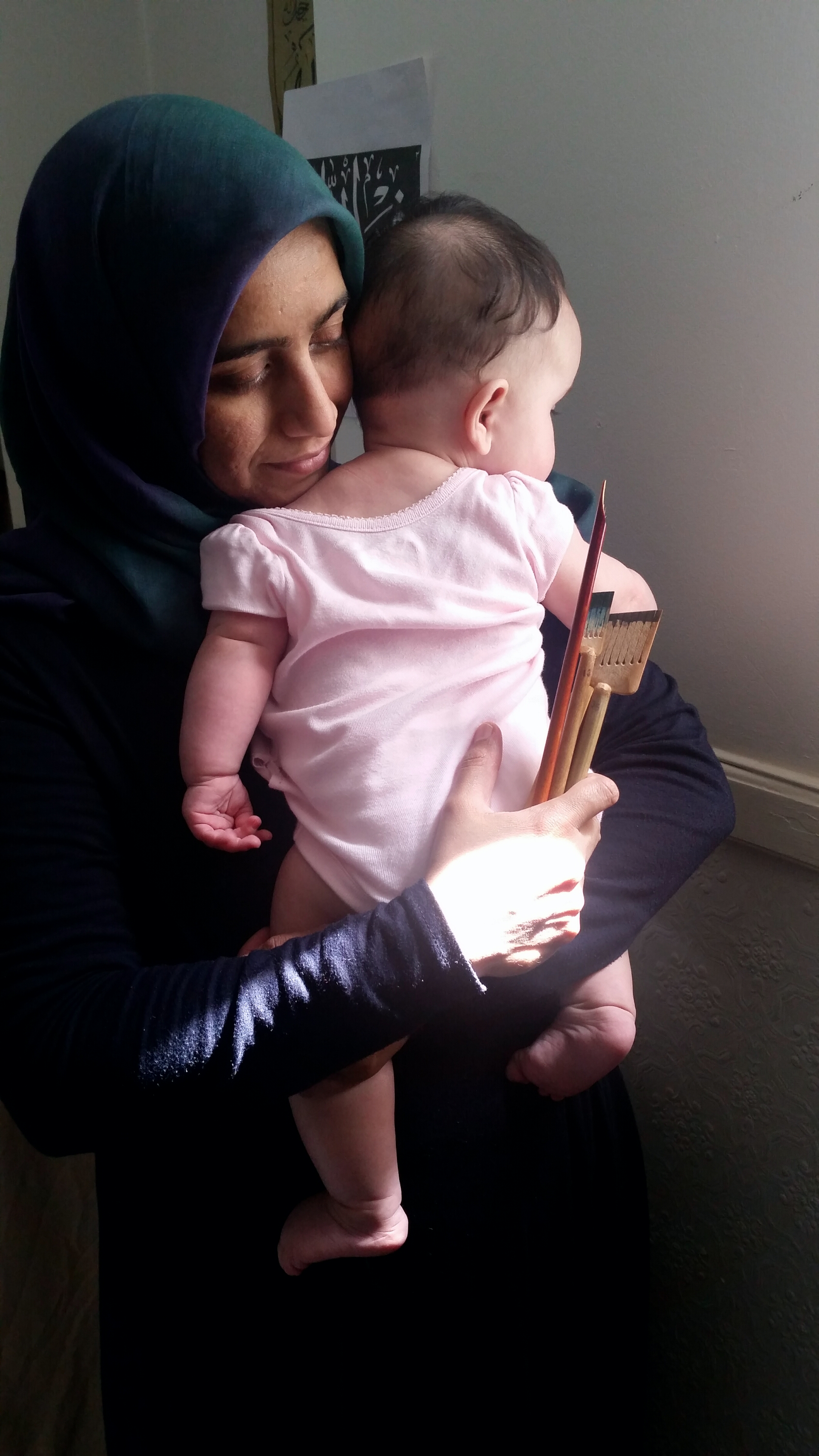Albert Einstein said, “It is the supreme art of the teacher to awaken joy in creative expression and knowledge.” The teacher-student relationship is an unique bond that involves a lifetime of learning and inspiration as evidenced in master calligrapher Gulnaz Mahboob’s relationship with her teacher, Turkish master Hasan Celebi.
Gulnaz is an U.K based classically trained calligrapher and teacher. In 2005 after a trip to Istanbul, Gulnaz started studying under world-renowned Turkish grand master, Hasan Celebi. In 2012, Gulnaz Mahboob received the coveted ijazah or certification from her teacher. She holds a MA in Social Anthropology from SOAS, University of London and a BA in Communication studies with Graphic Arts & Illustration from Anglia Ruskin University. Gulnaz currently teaches calligraphy at various institutions and privately. She recently donated one of her works to the Cambridge Mosque Project, a project designed to raise funds for Cambridge, England’s first eco-mosque.
Over the summer, I got in touch with Gulnaz for an interview, which she very graciously accepted. She shared how she came into calligraphy and talked about her beloved teacher, Hasan Celebi, from whom she has gained not only knowledge of the art but everything else that is required to successfully practice calligraphy.
What inspired you to study calligraphy?
A dream during a Ramadan. It featured the letter 'nun'. The dream caught my attention or maybe the tranquillity I felt left an impression - it was the spur I needed. I certainly needed the healing that came from the letters!
My love for creativity and specifically calligraphy has always been there. There were a series of sequential events and discussions , which 'set-up' learning calligraphy. I thought it was more of a recent interest but it goes all the way back to my childhood. I came across a folder where I was tracing calligraphy. I must have been 9 or 10 because along with the calligraphy were cute little bears. My mind had completely erased this memory. The way had been paved prior to my thirties, which is when I started with my Master Hasan Celebi.
2) Most important thing you learned from your teacher?
I cannot answer this question if you restrict me to one point. Come on. :) Have you met Hasan hoca?
Gulnaz with her teacher, master calligrapher Hasan Celebi
[Two points]: What we learn from him and what we learn from the unspoken - what his work taught. The latter is completely subjective.
Hasan Celebi hoca (teacher) taught adeb (etiquette) in the complete sense of the word, love, respect and humility towards the letters, which extended to people, young and old regardless of gender. He was extremely generous with his time and the knowledge he shared. His patience was/is paramount! All of these qualities & more were in abundance and hence it is difficult to narrow it down to one important thing.
Adeb was a very important lesson to learn as the value of adeb transcends religion or culture and operates in all the circles of our being. To write the letters with love and devotion were central to his teaching. He was able to take a basic tool like a qalam (pen) and make the letters breath life and light. Most calligraphers will be able to write but very few can bring the letters into 'existence' and this I believe can only be achieved with certainty and refinement. Observing his skill and nature was a great privilege and an utmost honor to learn from such a great and refined Master.
What gives value to the piece after the chosen text is the soul of the calligrapher. You will see good pieces but there is no attraction, others are beaming with life, movement and light. They can hold your attention endlessly and you do not know why. Some of the Ottoman Masters are amazing in this regard.
We learn even more about the soul of the master or a student from their practice sheets and draftings. These raw stages of work tend to be my favorite. For example, there was an exhibit of practice sheets and drafts by Halim hoca (Mustafa Halim Ozyazici), one of Hasan Hoca's teachers. I felt so much rhythm, movement and energy in his work that physically I felt his rhythm. They were living pieces and I could just imagine Halim Effendi flying away with the qalam lost in the moment. I am not an expert but I was in love with these pieces and he has become one of my favorites since. I'm sure that if I had such close ups of Ottoman Masters they would all be my favorites too!
Hasan hoca examining Gulnaz's work
Writing in the present moment and allowing yourself to be written effortlessly is what Hasan Hoca has. This inevitably has to come after you put in many, many years of hard work. It takes a great amount of certainty and clarity to lead in this way in the current mood of calligraphy. You have to allow yourself to be written. The source is heavenly which transfers through to the hand.
3) Your greatest challenge as a student of calligraphy?
Hesitancy - I didn't want to write ugly letters, what I felt was an injustice to the letters and to my Masters time. Subconsciously, I was trying to perfect the letter in the first go , which is impossible, it was constricting and the freedom and flow was not able to surface. This inevitably led to periods dragging, which slowed progress. The quality of the writing went up and down and at times completely stopped. It was unbalanced. Getting the right mindset and the consistency was the difficult part. Even so, these dormant periods were valuable. When it did finally come together and it does eventually, you feel gratitude. That the difficult has become beautiful.
It is a very honest art. Writing the Divine words as beautifully as you can in that moment should be your foremost motivation with lots of hard work. Thereafter the direction your writing takes is not in your capacity to control and you have to accept this. I am only just beginning to understand this.







